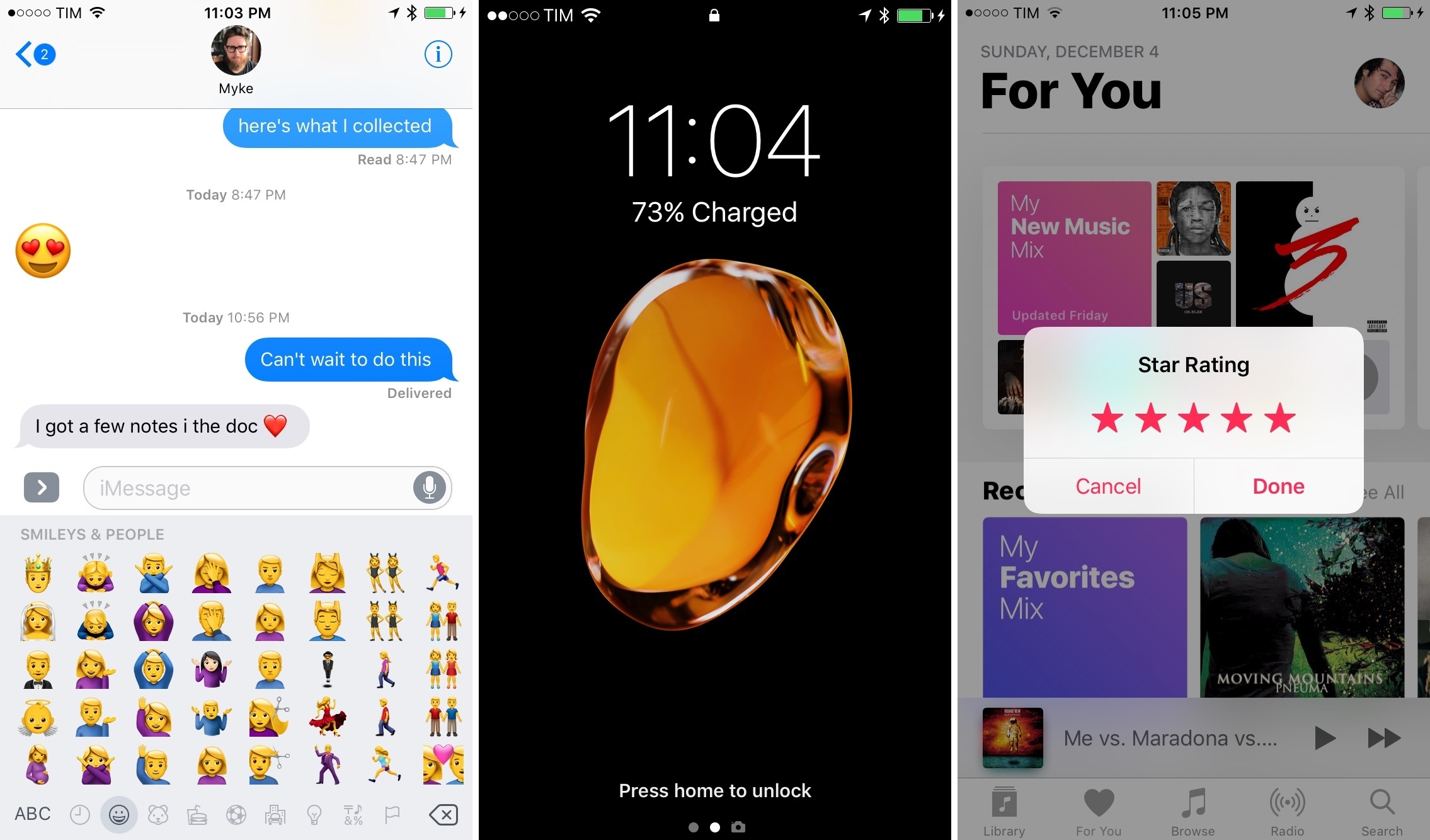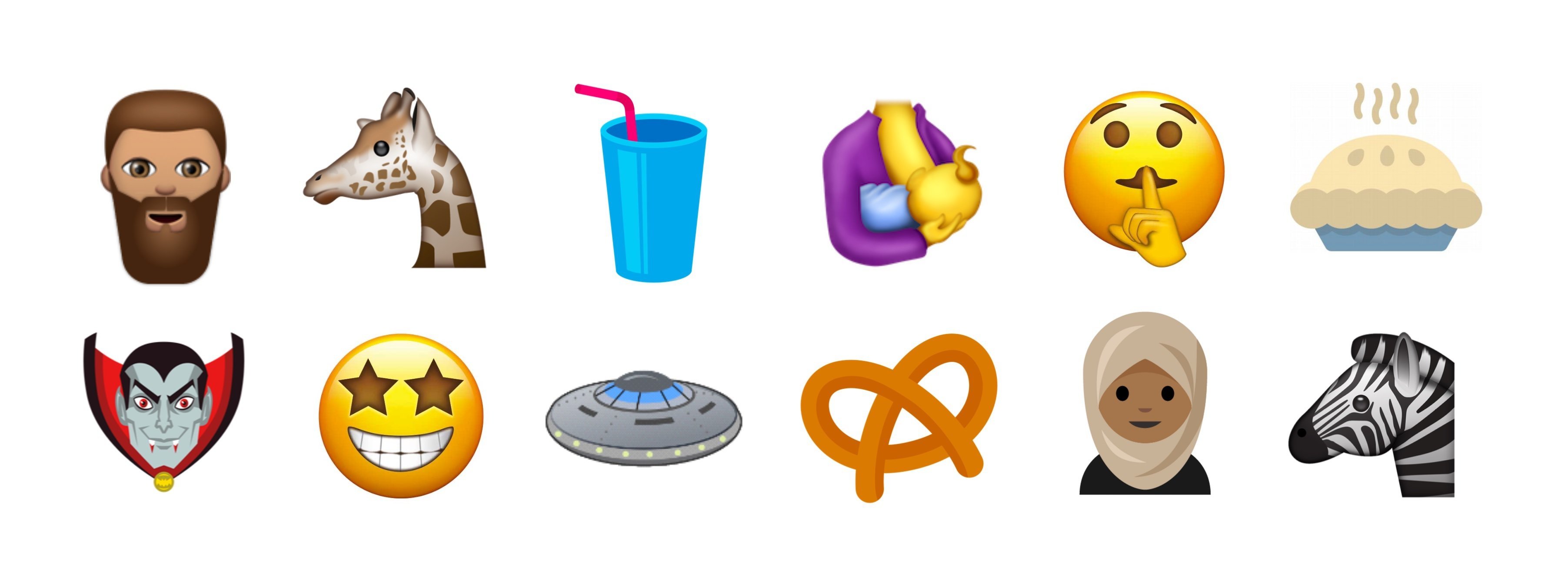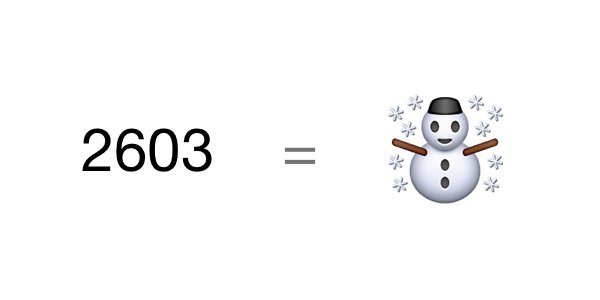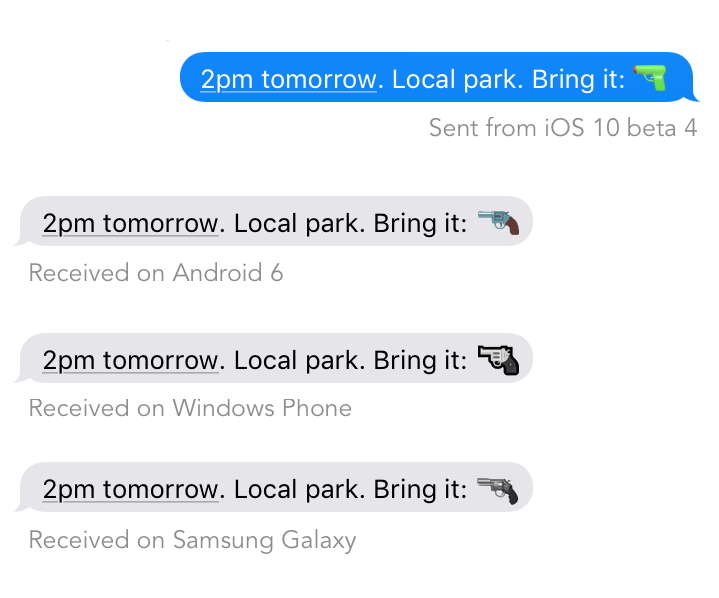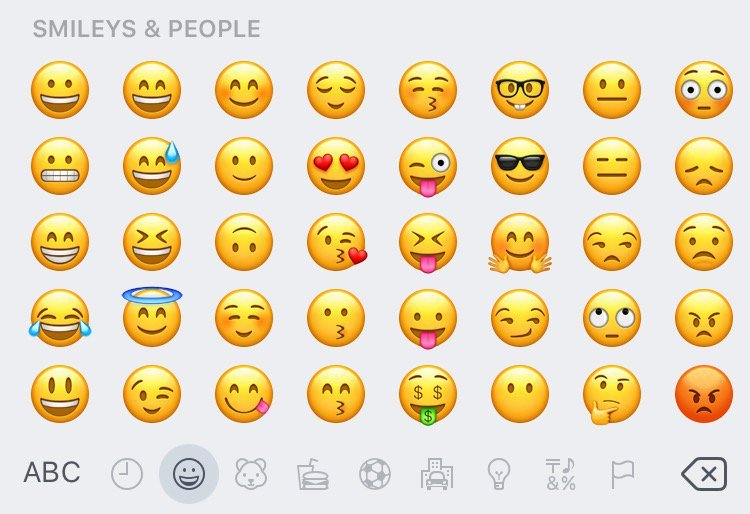Apple released iOS 10.2 to the public today, bringing new and redesigned emoji, a variety of improvements to system apps and settings, and, for US-based users, the debut of the previously announced TV app.
Posts tagged with "emoji"
Apple Releases iOS 10.2 with new Emoji, TV App, and More
51 New Emojis Proposed for 2017→
The Unicode Consortium proposed 51 new emojis for inclusion in Unicode 10. According to Emojipedia.org:
New emojis include a giraffe, pretzel, vampire, bearded man, soda/milkshake, breastfeeding, a “shhh” face, pie, starry-eyed face, woman in hijab and zebra.
The proposal also includes broccoli, a coconut, a sandwich, two kinds of dinosaurs, yoga, rock climbing, socks, and an orange heart. The final decision on which emojis will be included in Unicode 10 will be made in mid-2017.
For the complete list of proposed emojis and more images, check out Jeremy Burge’s post on Emojipedia.
How Slack Is Using Emoji→
After introducing emoji reactions last year, our own Slack team saw a dip in the total number of messages sent. With hundreds of members communicating across a couple thousand channels, it was a welcome change. Before emoji reactions, messages begot more messages: replies, questions, acknowledgment. In a word, noise.
Fascinating look at how Slack is using emoji inside the company. It’s sort of amazing how versatile emoji can be when used in work communications with a bit of creativity. I’m also going to implement this idea for our own Slack:
Speaking of 18F, check out their blog post about using emoji reactions for knowledge management. They tag all “evergreen” content found in channels with
:evergreen_tree:, and use a search query like the one mentioned above to find new messages worth codifying in their handbooks. At Slack, we do something similar, where anyone can tag a message with:notebook:to indicate it might be worth adding to the company’s internal documentation.
David Bowie Emojis Included in iOS 10.2 Beta→
Sheldon Pearce, writing for Pitchfork:
The latest iOS update for iPhone will feature “male and female singer” emoji’s based on the cover of David Bowie’s 1973 album, Aladdin Sane, _The Sun_ reports. It is a part of a profession selection that includes firefighters, painters, doctors, scientists, pilots, and more. Take a look at the male and female singer emojis below via Emojipedia. iOS 10.2 also includes updated versions of previously released transportation and food emojis.
Great nod to Bowie. I love that Apple is including this in a keyboard millions of people will use every day.
Emojis Explained→
There’s a lot of confusion about what actually constitute emojis, in no small measure due to the term’s liberal use by apps like Kimoji. Owen Williams sets the record straight, dropping some emoji knowledge over on Emojipedia. Williams starts with a little history:
The term “emoji” originates from Japan, and it’s a generic term there, similar to emoticon in English (though the fact they sound similar is purely coincidental). They started life as a set of pictures out of a research laboratory, and introduced nationwide after DoCoMo i-mode shipped with the first set.
Emoji evolved into the term used to describe the characters approved by the Unicode Consortium that work on any device. As Williams explains:
Put simply: [an emoji is] actually a universal code set that translates from machine speak into the pictures you see when you send a ? to your friends and they know what you’re talking about.
What’s cool about emoji is that they work like a letter of the alphabet. Sending an emoji doesn’t send an image, just the code, which each device translates into the corresponding image.
As Williams explains, Kimoji aren’t emoji at all, they’re image-based stickers wrapped in a custom iOS keyboard app. Twitter hashflags are also custom images that are even more restrictive because they only work on Twitter.
With iOS 10’s adoption of sticker packs in Messages, the distinction between emojis and stickers is likely to get even blurrier, but remember emoji are free, built-in, and cross-platform, which makes them the most flexible way to express yourself to your friends.
(Image by Emojipedia.org).
Gboard Adds Support for Multiple Languages→
Nice update to Google’s custom keyboard for iOS released today on the App Store:
Gboard is already available in English across the U.S., Europe, Canada and Australia. Starting today, Gboard is ready to start sending GIFs, searches, emojis and more for our friends who speak French, German, Italian, Portuguese (Brazil and Portugal) and Spanish (Spain).
Gboard’s emoji search is the best way to search for any emoji I’ve tried on iOS. iOS 10’s predictive emoji suggestions aren’t even close to the Gboard’s emoji features. I was hoping iOS 10 would have proper emoji search – maybe next year.
But I’m surprised that Google hasn’t shipped an actual multilingual keyboard to type in two languages simultaneously. You have to switch between international layouts inside Gboard – just like in Apple’s current keyboard for iOS 9. By contrast, iOS 10’s upcoming multilingual keyboard is downright amazing, and I can’t go back to keyboards without multilingual support now.
A Proposed Alternative Approach to Apple’s Redesigned Pistol Emoji→
Earlier this week Apple introduced new and redesigned emoji as part of iOS 10 developer beta 4 and public beta 3. Among the new emoji are a pride flag, single-parent families, and more emoji featuring women. Apple also changed the existing pistol emoji from a realistic image of a gun to a water gun.
According to Jeremy Burge of Emojipedia, Apple’s change to the pistol emoji has been the single most poorly received emoji change since he started Emojipedia. The range of criticism has been wide and varied, but as Jeremy points out:
The real issue here is that emoji is bigger than Apple. Or to put it more succinctly, this is dangerous:
If Apple goes ahead with this change in the public iOS 10 release, one person could innocently tweet a toy and have that be seen by others as a weapon.
Burge proposes an alternative way to handle the situation without changing the meaning of the pistol emoji in a way that is inconsistent with other platforms – simply hide it so the pistol emoji isn’t available from the iOS keyboard.
I like Burge’s solution. Regardless of your view of whether there should be a realistic representation of a gun emoji on iOS, changing the meaning of the emoji is problematic when considered in the context of other vendors that use a realistic gun for the pistol emoji. Apple’s change only creates confusion that, as Burge rightly points out, could be dangerous.
For another great discussion of the changes to the pistol emoji in the iOS 10 beta, I also recommend Episode 102 of Connected, which does an excellent job of exploring the difficult issues Apple’s change raises.
Apple Refreshes Emoji with iOS 10 Developer Beta 4
Apple refreshed over 100 of its emoji with iOS 10 beta 4, which was released earlier today. Some of the highlights include:
- gender-diverse emoji, including female athletes and professionals;
- a new rainbow flag;
- new family options; and
- a water pistol.
In addition to the new emoji, Apple redesigned many of its existing emoji. For instance, ‘grinning face with smiling eyes’ no longer looks like someone gritting their teeth. Many other emoji received a subtler update as a result of a new shading gradient.
It appears as though Apple is not quite finished with its emoji refresh because some of the approved Unicode 9 emoji, including the much anticipated bacon emoji, are not part of the iOS 10 beta 4 release.
Currently, the new, updated emoji are only available as part of the iOS 10 developer beta.
The Convergence of Emoji→
Good post by Sebastiaan de With on how different companies are quietly agreeing on emoji conventions:
Companies like Google and Microsoft are entirely free to attempt to reshape our popular culture by changing the way their emoji look. They could easily dig their heels in and refuse to change their emoji iconography despite jarring differences between sets.
Fortunately, this isn’t the case. What we’re seeing instead is that the new emoji sets from Google and Microsoft have converged to a look that is far more similar to Apple’s, often mimicking particular peculiarities in expression or design that Apple apparently chose on a whim.
The peach emoji example is a great one – it shows how Google prioritized common usage over Android’s history.
See also: emoji fights at the Unicode Consortium.


